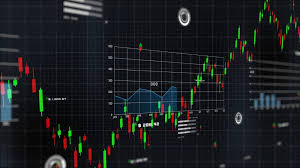Understanding the Crypto Trading Framework: Strategies for Success
The rise of cryptocurrencies has reshaped traditional finance and introduced innovative trading methodologies. To navigate this new landscape effectively, a well-defined Crypto Trading Framework is essential. In this article, we will explore the components of a successful framework, trading strategies, market analysis, and risk management techniques. For more insights into the evolving digital landscape, Crypto Trading Framework visit website.
What is a Crypto Trading Framework?
A Crypto Trading Framework is a structured approach to trading cryptocurrencies. It encompasses various elements including strategies, tools, and risk management practices that help traders make informed decisions. A solid framework allows traders to analyze market trends, manage risks, and optimize profits while minimizing losses.
Key Components of a Crypto Trading Framework
The effectiveness of a Crypto Trading Framework hinges on several crucial components:
- Market Analysis: Understanding market trends and behaviors is fundamental. Traders often utilize both technical and fundamental analysis to gauge market sentiment and make informed decisions.
- Trading Strategies: Different strategies such as day trading, swing trading, and position trading cater to various risk appetites and trading styles.
- Risk Management: This aspect involves techniques that limit potential losses. Concepts such as stop-loss orders and position sizing are vital.
- Tools and Technology: Various platforms, tools, and algorithms can aid traders in analyzing data and executing trades rapidly.
- Psychological Factors: Emotions can significantly impact trading decisions. A successful framework incorporates psychological strategies to manage emotions and maintain discipline.
Market Analysis Techniques
Market analysis is a cornerstone of any trading strategy. Traders primarily use two analytical approaches: technical analysis and fundamental analysis.
Technical Analysis

Technical analysis involves studying price charts and using indicators to predict future price movements. Common tools utilized in this approach include:
- Moving Averages: These help smooth out price data and identify trends.
- Relative Strength Index (RSI): This momentum oscillator measures the speed and change of price movements to identify overbought or oversold conditions.
- Support and Resistance Levels: Identifying these levels can help traders make informed entry and exit decisions.
Fundamental Analysis
Fundamental analysis focuses on understanding the intrinsic value of a cryptocurrency. Key components include:
- Project Team: Evaluating the team behind a cryptocurrency provides insight into its potential for success.
- Technology and Use Case: Understanding the underlying technology and real-world applicability can indicate long-term viability.
- Market Sentiment: The overall sentiment towards a cryptocurrency can influence price movements significantly.
Crafting a Winning Trading Strategy
A well-crafted trading strategy is essential for navigating the highly volatile cryptocurrency market. A comprehensive strategy should include:
- Entry and Exit Points: Clearly defined entry and exit points help traders to execute their plans effectively and minimize emotional decision-making.
- Trade Management: This involves monitoring trades and making adjustments according to market movements.
- Review and Optimize: Regularly reviewing past trades allows traders to learn from their experiences and refine their strategies.
Effective Risk Management
Proper risk management is vital to ensure long-term success in crypto trading. Here are some key strategies:

- Diversification: Spreading investments across multiple assets can reduce exposure to any single asset’s risk.
- Setting Stop-Loss Orders: These orders automatically sell an asset when it reaches a predetermined price, helping to minimize losses.
- Position Sizing: Determining the right amount to invest in each trade based on risk tolerance helps manage overall exposure.
Tools and Technology for Crypto Trading
Modern crypto trading is heavily reliant on technology. Here are some essential tools that can enhance trading performance:
- Trading Platforms: User-friendly interfaces, advanced charting tools, and various order types are key features to look for in a platform.
- Market Analysis Tools: Tools that provide real-time data, news aggregators, and social sentiment analysis can empower traders to make more informed decisions.
- Automated Trading Bots: These bots execute trades based on predefined strategies, allowing for quicker responses to market conditions.
Dealing with Psychological Factors
Trading is as much a psychological endeavor as it is a technical one. Traders often face emotional highs and lows that can cloud judgment. To manage these psychological factors:
- Establishing a Routine: A consistent trading routine can help reinforce discipline.
- Keeping a Trading Journal: Documenting trades and emotions can provide valuable insights and promote accountability.
- Setting Realistic Goals: Having achievable targets reduces pressure and prevents emotional decision-making.
The Future of Crypto Trading Frameworks
As the cryptocurrency landscape continues to evolve, so too will the Crypto Trading Framework. Innovations like artificial intelligence, machine learning, and improved data analytics are likely to further enhance trading methodologies. Embracing these emerging technologies can provide significant advantages in a fiercely competitive market.
Conclusion
A well-defined Crypto Trading Framework is crucial for success in the volatile world of cryptocurrency trading. By integrating comprehensive market analysis, effective strategies, robust risk management practices, and the right technology into your framework, you can increase your chances of thriving in this dynamic environment. As the market continues to evolve, staying informed and adaptable will be key to navigating the future of crypto trading.